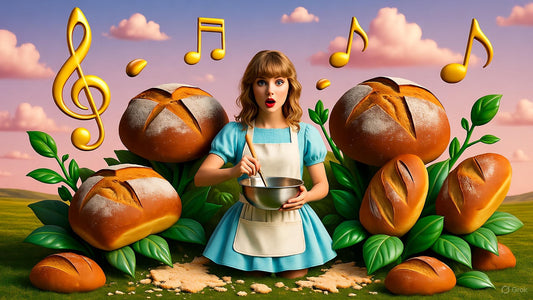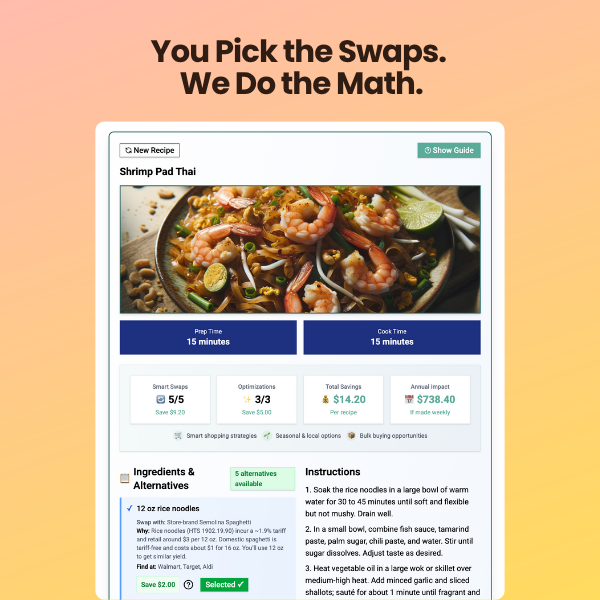
Feeding Four Generations at Thanksgiving: When Grandma Wants Jello Salad and Your Niece is Vegan
Babette PepajSo here's where I found myself last Thanksgiving: standing in my kitchen at 9am, staring at a menu that somehow needed to satisfy my mom's (team marshmallow-topped everything), my health-conscious brother (keto, naturally), my best friend's daughter (vegan), and my uncle who believes vegetables are "what food eats."
If you've ever hosted a multigenerational holiday meal, you know this feeling. It's that moment when you realize you've accidentally signed up to be a short-order cook at the world's most emotionally charged restaurant.
But here's what I've learned after years of doing this (and running a food site for almost two decades): feeding everyone doesn't mean cooking forty-seven different meals. It means being a little bit strategic and a lot more flexible than we think we need to be.
The Menu Panic Is Real (But Unnecessary)
First, let's acknowledge that the panic is completely legitimate. You want everyone to feel welcome. You want to honor the traditional dishes that make it feel like a holiday. You also want to still like your family by the time dessert rolls around.
The mistake most of us make is thinking we need a separate version of every single dish for every single diet. We don't. What we need is enough variety that everyone can build themselves a genuinely satisfying plate.
Your vegan niece doesn't need vegan turkey, vegan gravy, vegan stuffing, and vegan fifteen other things. She needs four or five really delicious dishes she can eat. That's it. That's the whole assignment. I know because I was a vegetarian for 15 years and I just needed to feel like I was getting the full Thanksgiving experience too.
Your gluten-free sister-in-law doesn't need gluten-free versions of every single thing on the table. She needs to know what's safe, what's been cross-contaminated, and that there's enough substance that she's not eating three side dishes and calling it dinner.
Start By Looking At What Already Works
Before you spiral, take a hard look at your traditional menu. You'll be surprised how much of it already works for multiple people, or could with the smallest tweaks.
Roasted vegetables? Already vegan, already gluten-free, already delicious. That cranberry sauce? Probably fine as is. Mashed potatoes? Keep them simple with olive oil and vegetable broth, and suddenly they work for more people.
The point is, you're probably 60% of the way there before you even start adapting anything.
The Anchor Dish Strategy
Here's what actually works: give each dietary group one amazing anchor dish they're excited about, then fill in around it with sides that work for everyone.
So yes, maybe you're making traditional turkey for the meat-eaters (and making sure there are extra thighs and drumsticks because some people have strong feelings about dark meat versus white). But you're also making a stunning mushroom Wellington or a maple-glazed roasted cauliflower that's so good even the turkey people are fighting over it. Add in some excellent sides that happen to work for most diets, and suddenly you're not cooking multiple meals. You're cooking one very good, very inclusive meal.
Have The Actual Conversation
I know, revolutionary concept, but you need to actually ask people what they need. Not the day before. Not in a stressed group text at 11pm. Early enough that you can plan without wanting to fake your own disappearance.
"Hey, I'm working on the menu. What are your must-haves, and what are your can't-haves?"
Most people are surprisingly reasonable when you ask them directly. Your vegan niece probably just wants to make sure there's protein and substance, not just a pile of plain vegetables. Your gluten-free family member needs to know what's safe and which serving spoons have touched what. Your mom wants that ambrosia salad, even though it's basically marshmallows and canned fruit held together by Cool Whip and nostalgia. And you? You want pie. Plural. Because you're doing all this work and pie is your reward.
When you ask what people actually need instead of assuming or worrying, the menu gets a lot less complicated.
The Recipes That Make Your Life Easier
Some dishes are naturally inclusive and happen to be crowd-pleasers:
A really good grain salad with roasted vegetables and a punchy vinaigrette works for almost everyone and tastes better than half the "main dishes" anyway. Roasted sweet potatoes with olive oil and herbs? Universally beloved. A white bean and rosemary soup as a starter? Elegant, filling, and accidentally vegan and gluten-free.
These are the recipes that make you feel like a genius because they solve multiple problems at once. Everyone's happy, nobody feels left out, and you didn't have to cook separate meals.
When Tradition Needs a Thoughtful Update
Some recipes are non-negotiable because they're part of your family's story. That ambrosia salad your mom requests every year? It's objectively kind of weird. But it reminds her of her grandmother, and watching her face light up when she sees it on the table is worth every bit of the eye-rolling from everyone under forty.
But here's the thing: most traditional recipes can be adapted without losing what makes them special. The flavor profile stays the same. The texture can be nearly identical. You're just swapping out a few ingredients.
I've modified so many family recipes at this point that I've stopped being precious about "the original." If swapping regular flour for a gluten-free blend means someone can actually eat my dinner rolls, that's a win. If using coconut cream instead of heavy cream in a soup means more people get to enjoy it, even better.
And honestly? Half the time people don't even notice. They just notice that dinner was delicious and they didn't spend the next day feeling terrible.
This is actually why we built BakeBot, first on BakeSpace.com and then on our standalone tool BakeBot.ai. Not for some distant future kitchen scenario, but for exactly these moments. When you're holding your grandmother's handwritten recipe card and thinking "okay, but what if I need this without gluten?" You can just ask. When you're wondering if cashew cream will work in place of heavy cream, you can get an actual answer while you're standing there with the can opener in your hand. It's 2025. This is not your grandma's cooking hotline where you wait on hold for twenty minutes. The whole world of cooking tips, real-time advice, and expert help is right there at your fingertips. You can even talk to it, which turns out to be pretty helpful when your hands are covered in flour.
The Mid-Cooking Panic Moment
Because it will happen. Something will go wrong. The dairy-free mashed potatoes will be too thick. You'll realize halfway through that the "vegetarian" soup has chicken stock. The timing on everything will be completely off. You'll forget to buy extra dark meat and someone will give you That Look.
This is normal. This is cooking for a crowd. This is life.
The key is having a way to troubleshoot without completely derailing your day. You need something that can see what you're working with and help you figure out the save, not in ten minutes after you've googled seventeen things, but right now while the pot is still on the stove.
Sometimes you just need to point your phone at the too-thick gravy and say "help, what do I do?" And get an answer that actually works. That's the difference between a kitchen disaster and a funny story you'll tell later.
Spoiler alert... BakeBot.ai can do that too.
What Nobody Tells You
The hardest part isn't actually the cooking. It's letting go of the idea that you have to make everyone happy in the exact same way.
Your mom wants her ambrosia salad? Make it with love. It makes her happy, it's part of the tradition, and the fact that only three people will eat it doesn't matter. Your niece wants to know there are real options for her? Make sure there are, and make them good. Someone wants only dark meat? Buy extra thighs and drumsticks and don't let anyone guilt them about it. You want pie? Make three kinds and have a slice of each. You've earned it.
Everyone doesn't have to love every dish. They just need to feel like you thought about them. Like there's space for them at the table. Like their presence matters more than their diet.
The Real Win
You know what makes a great holiday meal? It's not perfection. It's not having seventeen versions of every dish. It's not even having everything ready at the exact same time (though that's nice when it happens - which BTW, BakeBot can help you do!).
It's everyone leaving the table full and happy. It's your niece texting you later to say thank you for making sure she had options. It's your mom getting teary because you made her ambrosia salad even though "you young people probably think it's silly." It's your gluten-free family member not having to worry about getting sick. It's you, at the end of the night, with a slice of pie and the satisfaction of knowing you pulled it off.
That's the goal. That's the whole thing.
And you can absolutely do this without losing your mind or your budget or your love of cooking. You just need to be a little flexible, a little strategic, and willing to accept that feeding people you love is always going to be a little bit chaotic and completely worth it.
Now go plan that menu.
You've got this.
If you need help this Thanksgiving, check out BakeBot.ai










